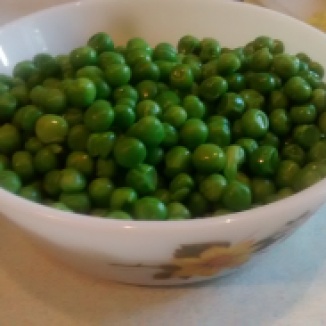Salted herrings are very, very popular in Poland, they have been a staple in Northern Europe since Medieval times as this was the way to preserve and transport fish – usually in barrels.
Śledź is the Polish word for herring.
Matjes herrings (matjasy in Polish) are young herrings which are caught throughout May and June before they start spawning in July.
The way that they are prepared originated in The Netherlands and the name comes from the Dutch word maagd which means maiden(because they are young fish).
Often you will see the phrase à la matjas – this means that they are in the style of the matjes herring but they will be a slighty older fish and not as expensive .
Salted herrings need to be soaked, often for up to 24 hours, in water to remove some of the salt.
I have used already prepared à la matjas herrings and I think they are still too salty – so I take the fillets out of the oil they are packed in and put them in milk for 10 to 15 minutes (you can do longer) and then pat them dry and slice them.
These herring salads are often served as an hors d’oeuvre (zakąska in Polish – something to bite after), appetizer, entrée or starter.
They are usually one of the dishes served at Wigilia (Christmas Eve).
Thinly sliced onions are a must to serve with the herrings!

Simple Herrings 1
Ingredients
- Thinly sliced herrings
- Thinly sliced onion
- A little lemon juice
Simple Herrings 2
Ingredients
- Thinly sliced herrings,
- Thinly sliced onion
- Chopped gherkins (ogórki).
- A little liquor from the gherkin jar
-
Simple Herrings 3
Ingredients
- Thinly sliced herrings,
- Thinly sliced onion and
- Sliced (red skinned) apple
- A little lemon juice
Herring Salads
The dressings used are: lemon juice, mayonnaise (full fat is best here), soured cream and horseradish – on their own or as a mixture.

I have not given quantities – exact amounts are not critical.
Herring & Apple Salad
Ingredients
- Thinly sliced herring
- Thinly sliced onions,
- Chopped (red skinned) apples
- Dressing
Herring & Potato Salads
The following salads are variations on classic Polish potato salads.
Herring, Potato & Gherkin
Ingredients
- Thinly sliced herring
- Thinly sliced onions
- Cold boiled or steamed,chopped potato,
- Chopped gherkins
- Dressing
Herring, Potato, Gherkin & Hard-boiled Eggs
Ingredients
- Thinly sliced herring
- Thinly sliced onions
- Cold boiled or steamed,chopped potato,
- Chopped gherkins
- Chopped hard-boiled eggs
- Dressing
Herring, Potato & Peas
Ingredients
- Thinly sliced herring
- Thinly sliced onions
- Cold boiled or steamed, chopped potato,
- Cooked peas
- Chopped hard-boiled eggs
- Dressing
Herring, Potato, Peas & Hard-boiled Eggs
Ingredients
- Thinly sliced herring
- Thinly sliced onions
- Cold boiled or steamed, chopped potato,
- Cooked peas and dressing
- Chopped hard-boiled eggs
- Dressing
Herring, Apple, Bean & Hard-boiled Eggs
When I first saw this recipe I was not sure how the beans would go with the rest of the ingredients. Having tried it, I think the taste combination is wonderful!
Ingredients
- Thinly sliced herring
- Thinly sliced onions
- Chopped (red skinned) apples
- Haricot beans – tinned beans with the tomato sauce washed off , rinsed and patted dry
- Chopped hard-boiled eggs
- Dressing
Chopped parsley & chives
All of the salads can have chopped flat-leafed parsley and/or chives sprinkled on top.

Flat Leaved Parsely
Updated April 2020



















































